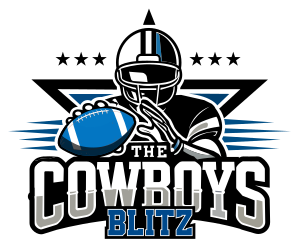NewsBot
New Member
- Messages
- 111,281
- Reaction score
- 2,947

Obviously things will change a bit, but this gives us a better idea of what to expect on defense for the Cowboys.
Questions still abound regarding the kind of defense the Cowboys will operate under new defensive coordinator Mike Nolan. Since his hiring hasn’t technically been made official, there haven’t yet been any interviews where Nolan might delve into the specifics.
But earlier this week, we broke down some tape of a multiple 4-3 scheme Nolan ran during his days with the Atlanta Falcons, which offered a bit of insight into how his mind works. Now, we have some glimpses of the defensive playbook Nolan used when he was the San Francisco 49ers head coach from 2005 to 2008, courtesy of the great John Owning.
This first look is the under front, with all of the players’ responsibilities included below.
/cdn.vox-cdn.com/uploads/chorus_asset/file/19601584/EOL72_ZUcAA_Upx.png)
While in San Francisco, Nolan ran a 3-4 but as this image shows, it functioned nearly the same as a 4-3. It includes a nose tackle in a 1-technique and a lineman in a 3-technique (though it’s labeled as a defensive end here). Another lineman is sitting in a 4-technique, meaning he’s lined up directly over the right tackle. Nolan then has his two outside linebackers, named SAM and WILL, on the edges, with inside linebackers in 20 alignment, or off the ball in the box.
Here, the SAM and WILL linebackers are more or less interchangeable. In the responsibility column, you can see that they’re both tasked with chasing the ball-carrier if it’s run in their direction, and if it’s run away from them then they’re tasked with shooting their corresponding gap. But either way, one of these two defenders is crashing down as they would as a 4-3 defensive end in a similar alignment.
Additionally, we can see that the defensive line involves more multiplicity than Cowboys fans have been accustomed to under Rod Marinelli. The 4-technique lineman is two-gapping, with his gap responsibility varying based on the run direction. The nose tackle takes on the A gap and the 3-technique hits the B gap. This mix of two-gapping and one-gapping on the same play is certainly a change for the defense. And guess who was the 49ers’ defensive line coach at the time: Jim Tomsula.
You can also see at the bottom that there are several front adjustments based on how the offense lines up, with the linebackers usually making that call on the field. This is a common theme throughout the playbook, as we see in Nolan’s over front, pictured below.
/cdn.vox-cdn.com/uploads/chorus_asset/file/19601586/EOL9TS1VAAAzwM_.png)
This is conceptually very similar to the under front, except everything is mirrored. The nose tackle is still a 1-technique but on the center’s left shoulder this time. And the right defensive end is now in a 4-technique and two-gapping while the left defensive end is in a 3-technique. The same goes for the linebackers, with the WILL now taking on more of a 4-3 defensive end role and the SAM is focused on controlling their respective gaps.
Nolan also had three other base fronts, which you can see below:
/cdn.vox-cdn.com/uploads/chorus_asset/file/19601587/EOMumtRUYAEsFZy.png)
The stack formation is almost identical to a 4-3 stack formation with the TED, MIKE, and WILL linebackers all in the backfield and the SAM on the line of scrimmage. Both ends align in a 4-technique with the nose tackle in a 0-technique over the head of the center.
The shade formation looks a lot more spread out. The nose tackle is a 1-technique but the right defensive end is a 4-technique with the WILL next to him, while the left defensive end is in a 5-technique with the SAM in a 9-technique. The TED and MIKE linebackers then play off the ball and effectively fill the space between the three down linemen.
The reduce formation is somewhat similar to a traditional 46 Bear front. The down linemen are tight inside, with two 3-techniques and a 0-technique, and the WILL and SAM are out wide on the edge. But in addition to the TED and MIKE in the backfield, a safety also comes down into the box, almost like an additional linebacker. Again, a lot of these concepts are very similar to the 4-3 Dallas has been using.
But the sub fronts seen below are even more akin to the 4-3, as they actually call for two defensive tackles and two defensive ends.
/cdn.vox-cdn.com/uploads/chorus_asset/file/19601588/EOMunFRUwAIGY6x.png)
All four of these sub fronts are dime packages with six defensive backs. These all involve the dime corner lining up in the box in some manner. Some interesting notes here are that the flex formation is designed to play the run first while the rush formation is playing the pass.
The magic front might be the most interesting one here because it calls for the defensive line to align in a 3-2 front with an edge player initially lining up like a linebacker (marked X on the diagram). The notes call for all defenders to be moving around within seven yards of the line of scrimmage. There’s two adjustments, 3-2 and sink, to make on this front as well, but even without that, this looks to be a rather confusing front to look at from the offensive perspective.
While this isn’t a complete look at the playbook, and Nolan will surely have some updates for his Cowboys playbook, it does offer insight into how his defenses were run under a more strict 3-4 front. It’s easy to envision a lot of current Cowboys defenders fitting in nicely in some of these roles, and should alleviate any concerns about a massive personnel upheaval with Nolan coming to town.
Continue reading...

